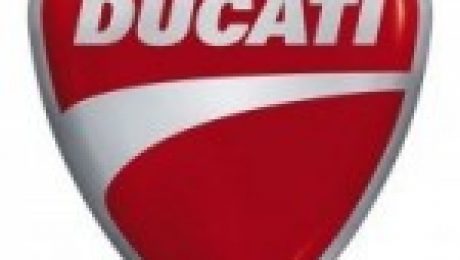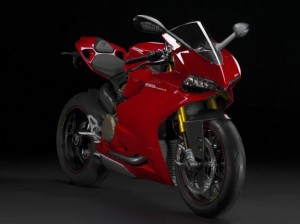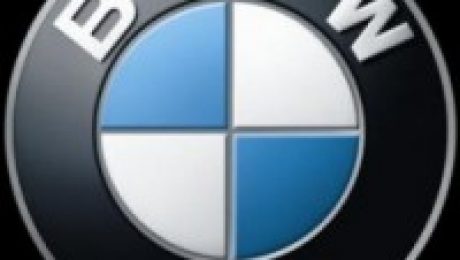Ducati Motorcycle Finance Promotion
Ducati Motorcycle Finance Promotion
For this summer, Ducati UK has launched a realm of affordable TriOptions PCP offers spread throughout the model range from the iconic entry level Monster 696 through to the flagship Superbike 1199 Panigale.
Ducati has constantly reacted to customer needs by not only producing market challenging products but also by making its motorcycles more affordable. This has been done by reducing service costs and extending service intervals and by offering a range of Ducati finance options that make the dream of owning a Ducati a reality.
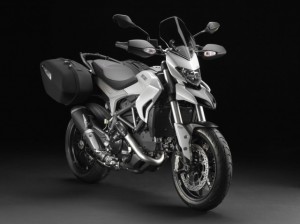
Ducati UK’s latest TriOptions PCP offers range from as low as £85 per month for a Monster 696 up to £199 for the award winning 1199 S ABS Panigale and with competitive finance APR levels ranging between 2.7% – 6.5%. The full range of Monsters is included in the promotion with a deposit level set at just 20%. The top of the range Monster 1100 Evo is available on the PCP deal at just £119. The 1100 Evo combines the renowned styling of a model celebrating its 20th anniversary with such features as Ducati Safety pack which includes both Traction control and ABS.
The most recent new Ducati model, the irresistible Hyperstrada, is also included in the campaign. This compelling mix of Motard and practicality is available on the PCP offer at an enticing £115 per month.
Another model often described as compelling is the Diavel. Its heady mix of blistering performance and cruising genetics accompanies the rest of the range in being part of this inviting PCP promotion. Price per month across the Diavel family range is from £139 per month for the Dark, to £169 for the new Diavel Strada, and on to £189 for the range topping Carbon model.
Finally the beloved 848 Superbike range completes the collection of PCP offers with a tempting £119 for the 848 Evo and just £125 per month for the 848 Evo Corse Special Edition.
All prices quoted are for an agreement duration of 37 months. Deposits, APR and fixed interest rates vary depending on model. The promotion runs from now until the end of September 2013.
- Published in Motorcycles
Ducati MotoGP team encouraged by Misano test after Assen struggle
Ducati MotoGP team encouraged by Misano test after Assen struggle
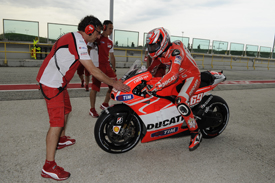 Ducati duo Andrea Dovizioso and Nicky Hayden felt their troubled team made tangible progress in a three-day test at Misano after its poor Dutch Grand Prix performance.
Ducati duo Andrea Dovizioso and Nicky Hayden felt their troubled team made tangible progress in a three-day test at Misano after its poor Dutch Grand Prix performance.
Dovizioso’s distant 10th place in the race was as good as the Assen weekend got for Ducati, as it struggled not only to match its prototype rivals, but to keep up with the leading CRT bikes in the Netherlands.
But the riders were reassured by the frame developments tried in the Misano test from Tuesday to Thursday this week. Test rider Michele Pirro joined Dovizioso and Hayden for the session.
“The Misano track is a bit inconsistent for our bike, but coming from Assen, we immediately felt a bit better at this circuit,” said Dovizioso.
“We worked on the current bike, finding a set-up for the Misano race, and then we went ahead with the development of the laboratory bike, trying some new stuff and finding some interesting things.
“We were able to do nearly two full days of good work, and today we tried a change with the frame. There were some positives, like an improvement with the feeling on corner entry.”
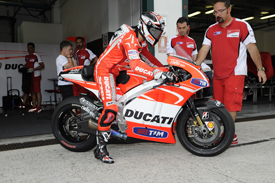 Dovizioso was unsure whether the upgrades could be raced in next weekend’s German GP.
Dovizioso was unsure whether the upgrades could be raced in next weekend’s German GP.
“We must decide what to do; it’s a new part, so we have to understand whether or not we can have it in time for the Sachsenring,” he said.
The satellite Pramac Ducati team was also testing at Misano, with Moto2 rider Alex de Angelis trying the bike ahead of his MotoGP race return in place of Ben Spies at Laguna Seca.
De Angelis was 1.9 seconds slower than team-mate Andrea Iannone as he got up to speed.
- Published in MotoGP
2013 BMW R1200GS Review
2013 BMW R1200GS Review
So here we are in South Africa, among the first in the world to ride the fifth generation of the A-T class icon. BMW’s goals for the new GS were improved performance, both off-road and on, plus enhanced safety and comfort.
“It was time to strike out on a new path,” said Hermann Bohrer, VP BMW Motorrad plant Berlin, at the bike’s launch. “We’re resetting the counter to zero.”
And by “zero,” BMW means this new GS shares virtually nothing with its predecessor.
Boxer Punching Above Its Weight
The key component to the new GS is a completely redesigned horizontally opposed Twin. BMW threw out everything except the engine’s bore and stroke, thus it retains the 1170cc displacement we’ve become familiar with over the past nine years. The revitalized Boxer will be making its way into other R-series Beemers, likely first into a reworked R1200RT within a year.
The previous Boxer motor used a blend of air and oil cooling, with air providing the bulk of the cooling (78%), augmented by heat transfer from oil for the remaining 22%. The engine in the new GS is being termed “liquid-cooled,” but 65% of the heat it sheds is still accomplished by air flowing over the engine’s remaining cylinder fins. Due to the retention of significant air cooling, the liquid-cooling of the new Boxer (two small radiators, coolant, hoses, fan) is purported to add just 6 pounds over the old air/oil-cooled mill.
The new Boxer’s cylinder heads also receive the benefits of a clean-sheet redesign. Instead of receiving air and fuel horizontally from behind the heads, the intake mixture is now sent via a “vertical through-flow” system, basically a full down-draft arrangement, for greater performance and efficiency. It also frees up foot space where the throttle bodies were previously located. Intake and exhaust valve diameters are up 1mm for more effective flow, and exhaust gases are now dumped from the bottom of the cylinder head.
Due to a narrow angle between the intake and exhaust valves, the more efficient combustion chamber allows compression to be bumped half a point to 12.5:1. Like Ducati’s Panigale, the new GS has an automatic decompression feature that allows a smaller starter and battery for less weight. Also new to the Boxer is E-gas, more commonly known as a ride-by-wire throttle. This advancement enables five programmed riding modes and cruise control for the first time in GS history.
The net result is a 15-horsepower boost, now pumping out a claimed 125 hp at 7700 rpm. Torque is also up, churning out a peak of 92.2 ft-lb at 6500 rpm, up from 89 ft-lb at 6000 revs. The new Boxer’s rev ceiling is lifted 500 revs to 9000 rpm.
Africa-By-Wire
Although many adventure bike owners don’t travel far off the beaten path, BMW’s GS has an enviable off-road reputation that has been integral to building the brand. To test out the full complement of GS chops, journalists were flown halfway around the world to exotic South Africa where traffic enforcement is lax and unpaved roads are abundant.
First impressions of the Berlin-built machine are strongly positive. The new GS looks great in the flesh, boasting a more contemporary and edgier appearance. An LED main headlight is said to be the first ever installed on a motorcycle. New LED turnsignals are tiny and must be the smallest OEM signals ever. Fingers wrap over new levers, one of them nylon, and both adjust over a large range via a new mechanism.
A slimmer midsection allows legs a more direct path to the ground from its 33.5-inch perch, its lowest position. Those needing more legroom can flip the seat’s adjustable mounts to yield a height of 34.3 inches. The seat’s angle can also be changed, although I’m not sure why any male rider would want a saddle that slopes into the back of the fuel tank. Optional is a low seat that drops heights to 32.3 or 33.1 inches.
The new Boxer fires up almost instantaneously and much quicker than last year’s model, settling in to a familiar horizontally opposed Twin cadence. A squeeze of the clutch lever reveals an incredibly light pull thanks to a mechanical assist function and an oil-bathed multi-plate unit that replaces the dry, single-plate clutch in the previous model that could overheat when bogged down to a crawl. Clutch maintenance is dramatically simplified by locating the clutch, now with a slipper function, at the front of the engine behind an exposed access panel. The clutch’s narrower engagement zone combined with less flywheel effect from the engine makes the bike slightly more difficult to tractor away from a stop than previous.
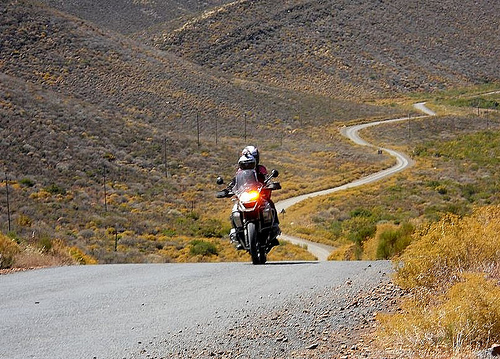
The clutch formerly resided between the engine and transmission, requiring removal of the tranny for replacement. But the unit-construction powertrain of the new GS means the gearbox no longer bolts on as a separate component. The result is a dramatically shorter engine front to rear, enabling a 53mm longer Paralever swingarm inside a 59.3-inch wheelbase identical to the old version.
The smooth engagement of first gear is a sign of good things to come. While the R1200’s old gearbox required long throws and considerable clunkiness, this new tranny shifts with remarkable slickness. Its only drawback is a neutral position that is sometimes difficult to toggle to while wearing off-road boots.
The torque curve from the previous R1200 lump was enviably flat, able to provide strong thrust at nearly every rpm. This new engine has a similar powerband, but it feels punchier throughout. One can tell a lot about the power of an engine by how easily it will pull a wheelie, and the swiftness at which the GS’s front wheel lifts off (when TC is disabled) with a bit of clutch in second gear demonstrates the new motor’s improved stonk. Enhancing the visceral riding experience is a newfound honk from the engine’s intake now located between and ahead of your knees. Their higher location also enables fjording deeper water crossings.
The E-gas R-b-W system is well sorted and doesn’t suffer a disconnected feel. Throttle response depends on which riding mode is selected. The Dynamic mode is snappiest, while Rain mode is at the other end of the spectrum. However, peak power is said to be supplied in every mode, and even the Rain setting didn’t feel overly neutered.
The GS uses a completely new steel frame to work with the new engine, but the bike’s key chassis geometry (rake, trail and wheelbase) is basically unaltered. As such, the fresh GS feels a lot like the old GS. Its curb weight has risen 21 pounds to 525 pounds, but it doesn’t feel any heavier.
There’s now more rubber on the road or trail. A 120/70-19 up front replaces the previous 110mm-section tire, while the rear (170/60-17) is 20mm wider. Cast aluminum wheels are standard equipment, but the optional spoke wheels of our test bikes are more rugged and better suited to serious off-road use.
Antilock braking is included with every new BMW, and the GS is no different. But what’s new is a pair of radial-mount Brembo calipers on the front wheel and a slightly larger brake rotor (276mm) out back. The front brakes feel sharp on the street, but they’re so easy to modulate via steel-braided lines that they also work well off-road, offering excellent sensitivity.
New ABS programming results in an improved system, with its parameters based on the chosen riding mode. Braking is “Integrated” in BMW-speak, which means the front and rear brakes are linked, again with settings based on ride modes. Two-wheel purists may hate the integrated-brake concept, but they have little to fear about its transparent operation in the GS. This is a terrific set of binders. ABS can be switched off if desired.
Suspension duties are again handled by a Telelever front end and a Paralever rear that incorporates the driveshaft. However, the Tele is a new design, and the EVO Paralever now swaps sides with the muffler. BMW claims they, together with the new frame, provide a significant increase in torsional stiffness.
The standard GS is equipped with a non-adjustable shock inside the Telelever, while the rear damper is adjustable for preload and rebound damping. But we didn’t test it.
Instead, we rode on bikes equipped with optional Dynamic ESA, a semi-active suspension system with roots first seen in BMW’s HP4 version of the S1000RR sportbike. A similar system is also featured in Ducati’s latest Multistrada. Spring-travel sensors relate data to a computer that electronically alters damping control based on riding conditions and the ride mode chosen. Inside each ride mode, the suspension can be set to hard or soft options.
Dynamic ESA performed well on the pavement, offering a fairly supple ride while maintaining enviable wheel control. BMW’s Telelever again proved its efficacy by limiting front-end dive under braking, something with which many long-travel adventure bikes struggle.
After some enjoyable paved roads, it was time to ascertain the GS’s off-road capability on a twisty gravel/dirt road. Switching to Enduro mode on the fly, the Gelande Strasse adapted itself to the loose conditions. I was pleasantly surprised at the considerable rear-wheel drifting the ASC allowed, letting a rider hang it out a bit while maintaining the security of a TC safety net. And the bike’s fatter tires didn’t seem to reduce effectiveness off-road.
Aiding tire grip is one of the most tractable engines ever placed in a motorcycle. The new Boxer is remarkably flexible, able to chug ahead cleanly from just 1500 rpm. Speeds on this road varied from 10 mph to 75 mph, but I kept the transmission in third gear the entire time while still maintaining a brisk pace. Traction was enhanced in slow corners by low revs, putting down its power confidently, and higher-speed sections were devoured by the extra surge of power at 6500 rpm.
Later in the day we sampled a GS set up for off-road work, including a one-piece (and taller) enduro seat, crash bars and an optional jumper wire that allows access to the Enduro Pro mode that offers sharper throttle response and allows more front-wheel lift before TC intervenes. As with the other modes, you’ll have to switch off the ASC to enjoy proper wheelies. Another benefit of Pro mode is that it automatically saves all your last settings (for example, ABS and TC switched off) and remembers them when re-starting; default settings are resumed when in the other ride modes.
The GS’s off-road behavior won’t surprise anyone who’s ridden previous versions. It’s still monstrous for anything resembling a dirt bike, but it’s shocking how well it can navigate tricky sections if you’re careful and maintain some momentum. Keep up your speed and it barges through almost any obstacle like a two-wheeled Panzer.
New for ’13 is a thicker aluminum handlebar that is placed just right for street adventures but is too low for riding while standing. However, the bar can be rotated forward in its clamps to yield a height nearly an inch taller. Rubber peg inserts quell vibration on road, and they compress under a rider’s weight when standing to offer feet a solid purchase on the pegs’ serrated edges.
Back on paved roads, the GS proves its mettle as a capable sport-tourer. A key improvement to its street manners is a larger windshield that now can be adjusted over a wide range of height and rake via a hand knob that can be spun while riding. It delivers exemplary protection when in its uppermost position and is said to be a significant 5 decibels quieter than the old screen (that could be only adjusted when the bike was stopped) at 110 mph.
As for the lofty velocity that few of you outside Germany or South Africa will enjoy, the invigorated GS proved to have no difficulty cruising at that speed. In fact, I saw 145 mph on the analog speedo more than once on our ride.
Sluicing through a canyon road is entertaining on the GS, able to be hustled at a hurried pace that could embarrass more than a few sportbike jockeys. The wide handlebar provides plenty of leverage to quickly bank into a corner, and the new suspension keeps the chassis on an even keel. Rider-friendly engine response, even in Dynamic mode, makes optimum use of available power. Gearshifts are swiftly dispatched, and the new slipper clutch proves to be surprisingly useful on an A-T bike when ridden like a sportbike.
As you can tell from what’s written above, we’re astonished with what BMW has done to comprehensively upgrade nearly every aspect of a bike that was already the class standard. The new GS is able and quite willing to tackle nearly every duty that could be thrown at it, from navigating Jeep trails to swiftly sailing to far-off destinations to a commute to work.
However, the GS did disappoint me during a casual ride down an open dirt road. I was standing up to get cool air through my riding gear, traveling about 45 mph, when I encountered a washboard section. In an instant and with seemingly no provocation, the bike went into a wild tankslapper that threatened to throw me from the bike. It was a very panicked second before the steering regained its composure.
We can’t yet say for certain this is a problem with the bike, but another journalist reported a similar experience when he was riding while standing. This is quite unexpected considering the chassis geometry is essentially unchanged from the previous model, plus there were no stability issues whatsoever during high-speed road riding. I wonder if perhaps the Dynamic ESA allowed the front suspension to pack down over the washboard surface, reducing its rake and trail to less stable geometry. Or perhaps the GS will end up with a steering damper when deliveries begin in March of this year.
U.S. pricing for the 2013 BMW R1200GS starts at $15,800 for the base model with a number of optional packages that increase the MSRP up to $18,870. That puts the starting price below the $16,150 MSRP for the 2012 model, though the highest-priced package is higher than the $17,795 BMW asked for the top-tier Premium Package for the 2012 GS.
- Published in Motorcycle Review
KTM 1290 Super Duke R Prototype to be Ridden at Goodwood Festival
KTM 1290 Super Duke R Prototype
When KTM revealed its 1290 Super Duke R at EICMA, it made it very clear the show bike was a prototype. An actual production version is on its way, as recent spy photos indicate, but the actual prototype displayed at Milan still maintains an aura of mystique.
The specs sheet, for example, was intentionally vague. Even though we know the engine is based on KTM’s RC8 R Superbike engine, the 1290′s actual displacement remains a mystery, described only as “more than ever.” Horsepower and torque figures are also unknown, with KTM only teasingly describing them as “very, very much”. The EICMA display was even set up to make it difficult to get a good look at the Super Duke R’s left side.
If it weren’t for a short teaser video full of powerslides, burnouts and wheelies, one might think the prototype was more a statue than a real functioning motorcycle. KTM will have none of that however, with the Austrian manufacturer announcing the 1290 Super Duke R will be ridden in public for the very first time at the Goodwood Festival of Speed in the U.K., July 12-14.
[ ATTRIBUTE: Please check: http://www.flickr.com/photos/72334647@N03/7041242135 to find out how to attribute this image ]Former MotoGP racer Jeremy McWilliams will get the privilege of riding the 1290 around Goodwood’s 1.16-mile Hillclimb course.
“It’s always an honour to ride at Goodwood, but to be honest this will be the most insane bike I’ve ever ridden and yes – more than a certain MotoGP bike,” says McWilliams, referring to the famously untameable Aprilia RS Cube. “Hopefully I can keep ‘The Beast’ on a leash and put on a good show for the fans at Goodwood. It is going to be memorable!”
- Published in Motorcycles
Italian bike firm MV Agusta plots new route to share float
Italian bike firm MV Agusta plots new route to share float
MV Agusta, a rival of Volkswagen’s Ducati hopes to be in a position to bring its brand of Italian superbikes to Milan’s stock market in 2015 as it embarks on a new campaign for growth, it said on Tuesday.
“Over the next three years we aim to double (motorcycle) sales with a solid capital structure, and we are convinced that the outcome will be the listing of the company on the stock exchange,” Chief Executive and President Giovanni Castiglioni said in a statement.
A source close to the family-owned company told Reuters that MV Agusta is aiming to grow revenues to 120 million euros ($157 million) a year in 2015 from this year’s expected 90 million thanks to the launch of new models like the Rivale 800 supermoto.
Applying the valuation multiple implied in VW’s purchase of Ducati, MV Agusta could potentially be worth as much as 150 million euros when it lists, providing it hits its targets.
Volkswagen paid 750 million euros to acquire Ducati last year, when Ducati generated 606 million euros from the sale of 44,100 motorcycles and earned 58 million euros in operating profit.
Valuations vary greatly amid the current uncertainty in the industry. Shares in Italian scooter and motorcycle maker Piaggio trade at 0.7 times forward sales while Harley-Davidson changes hands at 2.6 times sales, according to Reuters data.
However, Europe’s motorcycle market has almost halved in size since 2007, even though premium brands like Ducati, Triumph, BMW and KTM have gained market share at the expense of the four mass-market Japanese rivals including market leader Honda <7267.T>.
This slump helped trigger a shake-out in the industry. Italy’s Investindustrial sold Ducati to VW’s Audi in July 2012, while BMW offloaded its Husqvarna brand of offroad motorbikes, previously owned by Agusta, to Austria’s KTM in January for an undisclosed sum.
A legendary name in the motorcycling racing world, MV Agusta won no fewer than 75 world championship driver and constructor titles before largely disappearing in the 1970s.
Its rebirth in 1992 under motorcycle entrepreneur Claudio Castiglioni and renowned designer Massimo Tamburini created the F4 superbike, one of which belonged to King Juan Carlos of Spain and was loaned out to the Guggenheim Museum for an exhibit.
In the past 10 years, however, the brand has repeatedly come under financial duress and gone through several owners that included Harley-Davidson and Malaysian state-owned carmaker Proton . It was bought back in 2010 by Castiglioni shortly before he died, and is now run by his son.
Thanks to the launch of its all new range of three-cylinder sport and “naked” bikes, which have no fairings, MV Agusta increased annual sales by 87 percent to around 7,000 motorcycles last year, while revenue jumped 50 percent to 70 million euros.
Both MV Agusta and Ducati also compete with Italy’s other major sportsbike maker Aprilia, a unit of Piaggio. ($1 = 0.7649 euros)
- Published in Motorcycles
2014 Ducati Monster 1198
2014 Ducati Monster 1198
Camouflaged prototypes of a third-generation Ducati Monster have been spotted on the mountain road that joins Bologna with Florence through Italy’s Futa Pass, the traditional evaluation lap for factory test riders. Most likely, this is the hottest version of the next Monster, powered by a further honed version of the 1198cc “Testastretta 11 degrees,” the latest evolution of the eight-valve 90-degree V-Twin.
When I met Claudio Domenicali for the technical analysis of the 1199 Panigale, the soon-to-become CEO of Ducati Motor confirmed that he would keep developing and refining this family of engines since it is due to remain in production for many years to come, filling a number of roles through the model range. The 1199 Panigale and its soon-to-come derivative, the 898 Panigalina, will remain solely focused on a mission of all-out performance.
The next-generation Monster family will be more important than in the past and will also reach much higher performance levels, as can be expected by the adoption of the 1198 Testastretta 11 degrees unit for the top-of-the-line version. This engine will not produce less than the Multistrada’s 150 horsepower and will more likely reach the 160 hp of the Diavel.
I am tempted to speculate that the top version of the new Monster will replace the Diavel, mixing some of the style of the power cruiser with the traditional agility of the Monster and performance potential of the Streetfighter. Once again, Ducati might lead the way to explore new concepts, shuffling the cards to infuse new enthusiasm among potential motorcyclists.
As in the past, there will be a range of versions and displacements, including an intermediate machine powered by the same 821cc engine that powers the new Hypermotard. This will share the rolling gear of the top version, as the liquid-cooled, eight-valve Desmo would not fit in the traditional Monster frame that currently harnesses the air-cooled, sohc, four-valve V-Twin.
The 821cc Testastretta 11 degree reliably delivers 110 hp, which is more than adequate for fun on a naked, agile bike with strong character. Both the 1198 and the 821cc version of the Monster will feature a complete suite of electronics to make riding safer and even more enjoyable.
Since the bread-and-butter Monster has long kept assembly lines rolling, even in times of crisis, an entry-level version is a must. One possibility for such a machine is to share the basic styling of the new-generation Monsters with power from an updated edition of the air-cooled Desmo and rolling on a chassis derived from the current model.

- Published in Motorcycles
Aprilia RSV4 APRC Review
Aprilia RSV4 APRC Review
Move over, NASA. The Italians are now making all-conquering rockets, in the form of a bike!
Here’s the thing: you think you know what fast is until you ride a full-bore superbike. It crushes and annihilates the very definitions of velocity, acceleration and speed in your noggin. To the average person, it’s unfathomable and it’s still surprising to me that in a world where The Man regulates every last detail of your life, you still can write a cheque for something that ought to be flagged under arms embargoes. As it turned out, I found myself onboard one of these ballistic missiles recently and although I’m supposed to run you through a brave story of man conquering machine, I’ll be honest and fess up that it was sheer terror. Pin the throttle wide open long enough and you begin to question your very existence in this universe as tunnel vision kicks in around you. It begs the question: just how much speed was the average human designed to handle?
Not much, I’m guessing. You see, nature figured the fastest we’d go is on horseback or on cheetah back, if someone ever managed that feat. And before the invention of the parachute and the airplane, if you hit 200 kph, the average speed of free-fall, you were most certainly seconds away from death. So, when you put that aforementioned human on this, the uber-quick Aprilia RSV4 R APRC, his entire self-preservation instinct goes into panic mode and with good reason. The Aprilia RSV4 R is no ordinary motorcycle, just like Marilyn Monroe was no ordinary woman. It weighs 179 kgs dry, makes 178 horsepower and make no mistake, it’s a World Superbike racer for the road. Motorcycle hacks went gaga over it since the time they first rode it and Max Biaggi raced it to two World Superbike Championship titles. But all that gold didn’t come cheap as it took the better part of 25 million Euros and three years of toiling to come up with a world-beating Aprilia, an Aprilia like never before.
Aprilia is a prominent Italian brand based out of Naole, Italy and though they might not be as popular as Ducati the world over, they’ve been producing some quirky yet stunning motorcycles since 1945. They have an incredibly successfully on/off-road racing record and an ardent fan following in Europe. Being Italian, their motorcycles are as fast, stunning and high-maintenance as the women over there. Parent company Piaggio had hired one of the greatest engine “progettisti” (designers) on the planet, Claudio Lombardi, to design the V4 engine for their forthcoming flagship, the RSV4. Mr. Lombardi is the man who was responsible for the hallowed Delta Integrale, he’s led the Ferrari F1 team and now he designs V8 engines for Ferrari, so you know the man knows his engines. He went on to create a nuclear powerplant thinly disguised as a V4-configuration engine dripping with cutting-edge technology and electronics. It’s so advanced in fact that some of the engineering and technology is still used in top-level racing. It makes 178 horsepower at a heady 12,500 rpm and growls raucously like a big-block American muscle car making your hair stand on end. Beautiful stuff, inside out.
It was then passed onto eminent motorcycle designer Miguel Galluzzi, who gave it a purposeful yet gorgeous form, down to the smallest detail. The Italian craftsmanship is so stunning in the detailing that it could well make an enthusiast weep. The swingarm finished in bare aluminium, the swoopy, minimalist rear-end and the fragmented bodywork make it feel exquisite, quite unlike the de-rigueur Japanese motorcycle crowd. The Italians have a flair for injecting life into bare metal and this one is no different. Galluzzi was keenly aware that Aprilia wanted to create a superbike that embodied the DNA of a 250cc motorcycle and the results are there for you to see. Hop onboard and it won’t take you long to appreciate the diminutive size, compactness and mass centralization. To fire it up and putter around takes nothing; it’s unintimidating and non-taxing, like a well-behaved puppy but don’t be fooled. It’s a red-eyed, post-apocalyptic beast on a leash just waiting for a chance to bite your head off.
Turn the throttle to a stop and good lord, a wave of unbridled power slingshots you towards the distant horizon. The face-warping thrust hammers against your body without even a hint of mercy as you barely manage to hold on. 100 kph is dismissed in 2.5 seconds flat, 200 kph is dealt with in 8.6 scant seconds and if you’re brave enough, it will flirt with the dark side of 300 kph. Your muscles are strained to within an inch of tearing, your mind overwhelmed, your senses dazed and every last bit of your self-preservation instinct begs you to chicken out. Every single thought is shut out, sending your mind into a pure, almost-meditative state. It’s not all space-warp, though; courtesy the Cray-rivalling computing power, the RSV4 can behave like a big fat Labrador when you want it to. This APRC version comes with a host of electronic aids like anti-wheelie control, launch control, traction control, anti-lock braking and Ride Control with which you can determine how lairy the engine and throttle behaves. Man-eater or poodle, your choice.
In the twisty bits, the racing pedigree shines through as the impeccably balanced chassis treads a fine line between stability and agility. The riding position is taxing but makes you feel one with the motorcycle. The RSV4 feels agile, confident and unshakable, thanks in no small amount to capable suspension and brilliant, race-derived engineering. The Brembo Monobloc brakes are terrifyingly capable too. Employing top-shelf components, this Aprilia is a razor-sharp motorcycle that sits on top of the motorcycle food chain. There’s a good chance that its capabilities far exceed yours, so it’s a machine that demands respect, time and good judgment to tame.
As I hop off the RSV4, my heart is beating out of the rib cage, my blood stream is flush with copious amounts of adrenaline and my hands are trembling. Japanese motorcycles could offer you similar pace but they don’t offer the same sort of lively experience; they’re programmed to behave while the RSV4 is a bit rowdy, misbehaved and as a result, thoroughly entertaining. In other words, those motorcycles feel like they’re designed by factory robots while this one feels like it was formed by something with flesh, blood and emotions. For Rs 16-odd lakhs, the pricing is super competitive but it’s no motorcycle for the faint of heart. Think of it as jet-fighter thrills on a budget. After riding it, you’ll be convinced that there are two stages in life: before you ride a top-level superbike and after.
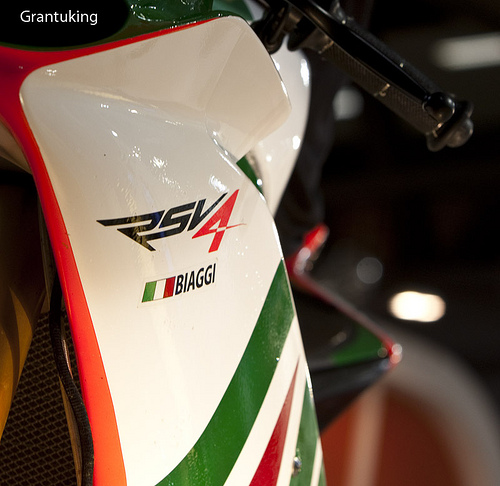
- Published in Motorcycle Review
Superbikes – Snetterton BSB: Railton set to defend Ducati 848 Challenge lead
Superbikes – Snetterton BSB: Railton set to defend Ducati 848 Challenge lead
Railton leads the standings from Marty Nutt who has also had an unbroken run of podium finishes in the class for the Nutttravel.com team following an intense battle at Donington Park last time out with the returning Dennis Hobbs. The Scottish contender missed the opening round of the season at Brands Hatch but will be hoping for a strong points haul this weekend to close the gap to his rivals in the standings.
Dean Brown narrowly missed out on a podium finish at Donington Park and will want to stay ahead of Daniel Fowler in the standings who also scored his best result of the season last time out with a fourth place as he aims for the top three.
Mike ‘Spike’ Edwards is determined to make his return this weekend to the grid after missing out following a crash at Donington Park and then suffering an injury at a test last week. The Ohlins @P&H Motorcycles rider was a double podium finisher at the Brands Hatch season opener and won’t want to miss the action this weekend
Darren Fry scored a double podium at the 300 circuit last season and will be aiming for his best result of the season whilst Leon Morris, Ed Smith and last year’s pole-sitter Byron Beckett are also going to be pushing for results this weekend.

Read the original article on bikesportnews.com
- Published in Motorcycles
Hero MotorCorp Buys Half of Erik Buell Racing
motorcycle news
According to a press release from Hero MotorCorp, the U.S. arm of Hero, HMCL (NA), has agreed to purchase 49.2% of Erik Buell Racing for $25 million. HMCL (NA) is said to have transferred $15 million to EBR with the remaining $10 million to be paid within the next nine months.
Hero says it will have two members and one observer sitting on the EBR board of directors but Erik Buell will continue as Chairman and CEO of the company.
“This equity partnership is a natural extension of our existing relationship with EBR, which is going to further strengthen our strategic alliance,” says Hero’s Managing Director & Chief Executive Officer, Pawan Munjal.
Hero, already a sponsor of EBR’s AMA Pro SuperBike racing effort beginning last year, will continue to receive international recognition as well as technological information gleaned from competing in the series aboard EBR machines. The financial infusion is also helping Hero attain its long-term goal of annually selling 10 million units.
“The equity partnership with EBR is reflective of our long-term vision of transforming Hero MotoCorp to a truly global two-wheeler major with footprints spread across continents, offering a wide range of technologically-advanced two-wheelers,” says Munjal. “As we go on spreading our footprint in new international markets, we will look at having extended centres of our own R&D at multiple locations around the world, developing two-wheelers for our global customers. Our evolving relationship with EBR is an initiative in that direction. We will continue to look for both organic and inorganic growth as we keep expanding globally. Our fully-owned new overseas subsidiaries such as the one in the US and in Netherlands will play important roles in our future overseas acquisitions and investments.”
- Published in Motorcycles
Triumph Daytona 675R Review
Triumph Daytona 675R

A multiple Supersport Shootout winner, the refurbished Triumph Daytona 675R looks to win over test riders with its bubbly Triple and R-spec performance. Watch the result in the 2013 Triumph Daytona 675R Supersport Street video.
The Triumph Daytona 675R is no stranger to Supersport Shootout success, a three-time shootout victor since its 2006 model year debut. After some minor revamps, the 2013 model year features the first engine overhaul for the British bike’s signature Inline Triple. The R-spec 675 also sources top-shelf components and electronics, making it a more potent package than ever before.
Engineers tweaked Triumph’s 675cc Inline Triple to be more oversquare, with a 76mm bore and 49.6mm stroke (from 74mm x 52.3). Compression is bumped and the valvetrain swapped for lighter parts. The new engine ran the dyno up to the tune of 113.68 horsepower and 49 lb-ft of torque. That’s a modest 3 hp increase from the previous model and slight decrease in peak torque, but this Daytona sports a fatter torque curve in the bottom and mid-range. The 600s catch up start catching up to the Triumph on the top end, and the Kawasaki 636 actually does. But the British Triple is all about the torque down low, where it surges well above all but the Ducati and Gixxer 750.
The translation on the street is an engine with plenty of pulling power across the entire powerband. Sporting the flattest torque curve in the test, the Triumph Triple makes for a practical and playful ride.
“Power from the 675R is perfect for the street,” confirms Adey. “It has great mid-range for pulling away from traffic when needs be. And it has the top-end grunt to put a big smile on your face when the road is clear ahead for full-tuck assault.”
Brimming with street-friendly torque, the Triumph Triple is also one of the most grin-inducing engines in this class. That’s old news for anyone who’s read past shootouts with a Triumph in the mix, but in this case the British bike gets one-upped by the thrilling Triple from MV Agusta. The Italian mount sounds better on the pipe, though the Triumph isn’t far behind.
“The Triple’s engine character, with its orgasmic throaty sound and smooth power delivery, made it most enjoyable to ride,” says Adey.
“The one thing that keeps bothering me when I ride a three-cylinder Triumph is the ‘whistle’ that can cover the exhaust and engine sound,” notes a keen-earned Massimo, before allowing the Daytona mill “has character and personality.”
The Triumph drivetrain makes huge gains in 2013 with its quickshifter and slipper clutch. While the gear lever actuation isn’t quite as smooth as the Japanese rides, the Daytona’s six-speed package is both forgiving and efficient. It stands out in this test as the only bike with both a quickshifter and slipper clutch, and each one performs well.
“The slipper clutch on it specifically, man you can jam down the gears and it never chattered, never got you out of shape,” says Nathon.
Riding the well-sorted Japanese bikes, riders can be forgiven for questioning the value of a quickshifter. But the Triumph’s bang-bang immediate upshifts will have them wishing every bike was provisioned so. The shifter proves valuable on the track, but just as convenient on the street. The electronic shifter also aided during performance testing, where Adam coaxed the Daytona to a second-fastest 0-60 at 3.5 seconds. In the quarter-mile the Daytona records the third-fastest time at 11.29 seconds.
The Triumph trails only the Kawasaki in handling and braking performance, and by the slimmest of margins. And tweaks to the steering geometry, with a steeper rake, make for a sharper turning chassis.
“The 675R felt solid all the way around in the handling department,” says Adey. “Given it comes equipped with full Ohlins sus¬pension and Brembo brakes. I expected no less than what I felt – a 10 out of 10 for me.”
The Ohlins units are a fully-adjustable NIX30 fork and TTX36 shock and performance from both live up to their spec sheet billing. Where the Showa BPF units offer stability and a planted feel, the Triumph’s Ohlins suspension package goes one step further. They damp out the inconsequential white noise coming up from the road, yet transmit immediate, precise feel. And while the Triumph turns so quick that a rider expects it to twitch and lift up front, instead transitions are smooth and controlled.
The modulation and lever feel afforded by the Triumph braking package is the best of the Brembo monobloc units in this test. Only the Kawasaki’s surprising Nissin setup rates higher – and, again, by an almost imperceptible margin.
“Stopping power is immense due to its Brembo hardware. Lever feel is progressive upon initial pull, making for no-alarm braking,” says Adey, with Massimo agreeing: “Together with the Ohlins, I think it was the best combination – with effortless breaking.”
ABS comes standard aboard the 675R, the only bike to do so. The system is switchable, with three settings: On, Off and Circuit. High-performance addicts will appreciate the second setting, insisting on their superior control and unhindered stoppie/rear-slide shenanigans. The rest of us mortals will enjoy the safety cut-in, and Circuit mode allows for a generous degree of tire slip.
Ergonomics on the Triumph haven’t been the highlight of the Daytona in the past, particularly for the street. It’s still not as comfy as the 600s, but this year it did seem improved in our tester’s opinions.
“Although they gave this bike a full revamp it feels pretty similar to the old one behind the windscreen,” admits Adam. “It still feels narrow, but it’s less top heavy and the ergonomics feel more balanced and GSX-R like.”
Adey likes the riding position too, saying: “Ergos on the 675R felt like a perfect balance between go fast now… chill later.”
The Daytona’s dash showcases all the necessary info in a concise space. The prominent right-side analog tach allows for programmable shift lights – a track-oriented feature to be sure, but another indication of the 675R’s race-bike build quality. The Triumph hasn’t always felt so top-shelf.
“The Daytona 675R is a quality motorcycle, and the fit and finish appears on the same level of the Japanese machines, which is a big improvement for Triumph,” says Adam. “I also LOVE the way it looks in white.”
In the appearance rankings, only the F3 rates higher than the Daytona. This result, along with the MV stealing the Triumph’s other usual gimmie on the scoresheet, engine character, may furrow some British brows… And it is ironic that the Triumph gains so much over on the Japanese because they are boringly similar, and yet it falls short in personality to the copy-cat MV. But the raw and ragged F3 has a long ways to go before it can displace the super refined Daytona.
The Daytona eeks out another Supersport victory with its high-performance chassis and engaging personality. Triumph’s Inline Triple continues to deliver, and the rest of the component package has improved as well – a shootout winning formula.
- Published in Motorcycle Review


